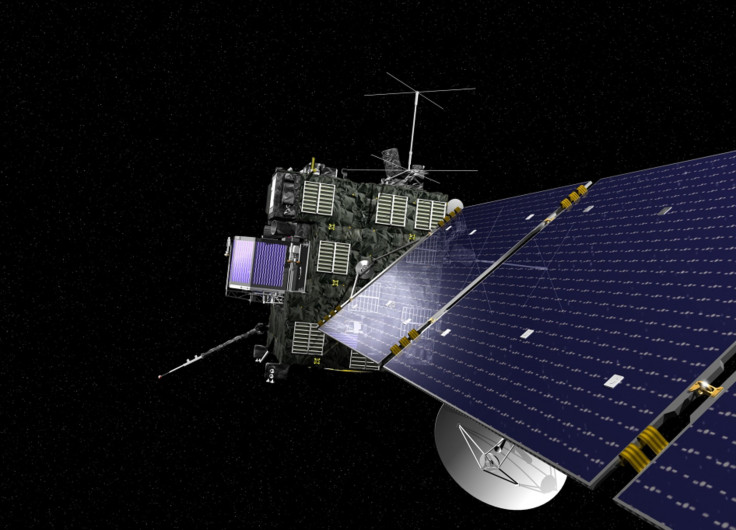Rosetta Mission Extended To September 2016 To Better Understand Comets’ Evolution

The European Space Agency (ESA) announced Tuesday that its Rosetta comet-chasing mission has been extended until the end of September 2016 to glean more information about Comet 67P/Churyumov-Gerasimenko. By that time, the Rosetta spacecraft is expected to join a probe that it deployed earlier, on the comet's surface, according to ESA.
Launched in 2004, the Rosetta mission was originally funded until the end of December 2015. But, on Tuesday, ESA’s Science Programme Committee gave the formal approval to continue the mission for another nine months. Scientists believe that the extended mission will help them better understand the evolution of comets.
“We’ll be able to monitor the decline in the comet’s activity as we move away from the Sun again, and we’ll have the opportunity to fly closer to the comet to continue collecting more unique data,” Matt Taylor, ESA’s Rosetta Project Scientist, said in a statement. “By comparing detailed ‘before and after’ data, we’ll have a much better understanding of how comets evolve during their lifetimes.”
Greetings from #67P! I captured this view on 15 June, 207km from the #comet http://t.co/529bX95lzQ #CometWatch pic.twitter.com/RirXew3J4o
— ESA Rosetta Mission (@ESA_Rosetta) June 24, 2015Extending the program is also expected to help scientists gain a better understanding of how a comet’s activity increases and declines along its orbit. Comet 67P/Churyumov-Gerasimenko, which is currently close to the sun's line-of-sight, will make its closest approach to the star at the center of our solar system on Aug. 13.
During the comet’s closest approach to the sun, scientists expect to move Rosetta much closer to the comet’s nucleus for a detailed survey of its brief “summer.” There could also be an opportunity to locate the Philae lander on the comet’s surface, according to scientists.
Rosetta landed on the comet last August and subsequently deployed the Philae lander on Nov. 12. Philae fell into hibernation after 57 hours of initial scientific operations, but recently awoke and made contact with Rosetta again. Earlier, the lander discovered that the comet was not magnetized, providing key insight into the early stages of formation for celestial bodies like comets or planets.
The extended mission will also focus on “new and potentially slightly riskier investigations, including flights across the night-side of the comet to observe the plasma, dust, and gas interactions in this region, and to collect dust samples ejected close to the nucleus,” ESA said.
© Copyright IBTimes 2024. All rights reserved.






















